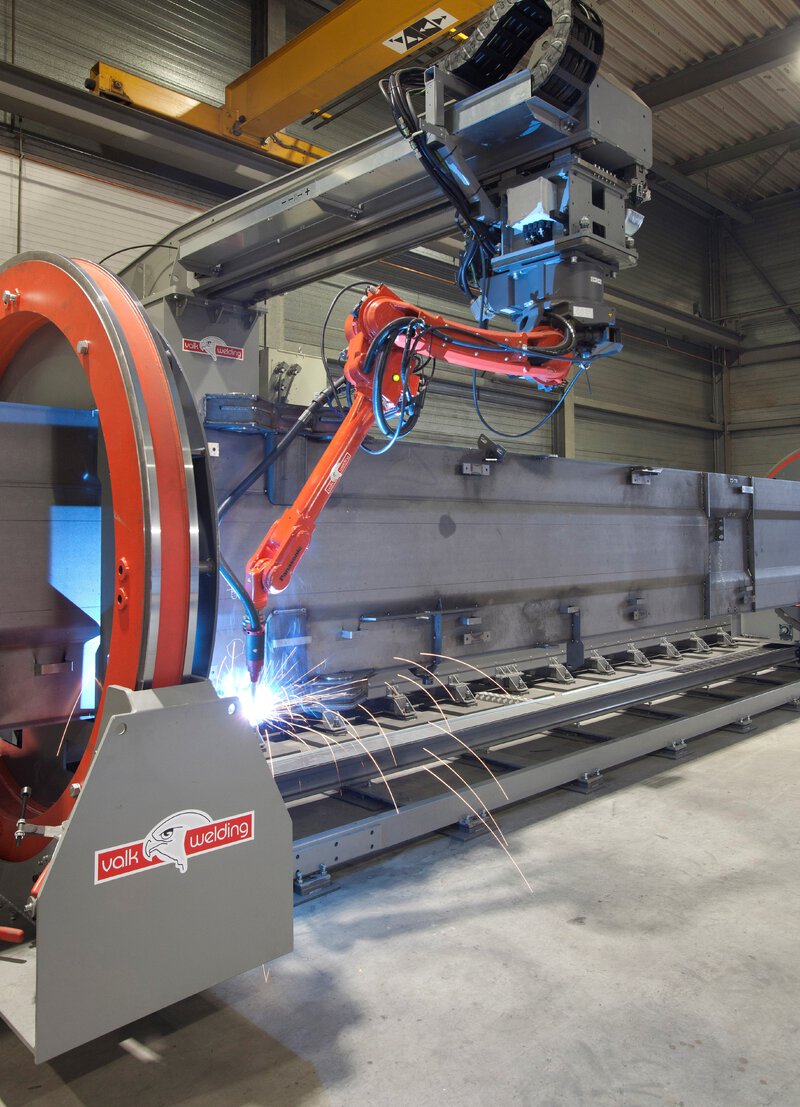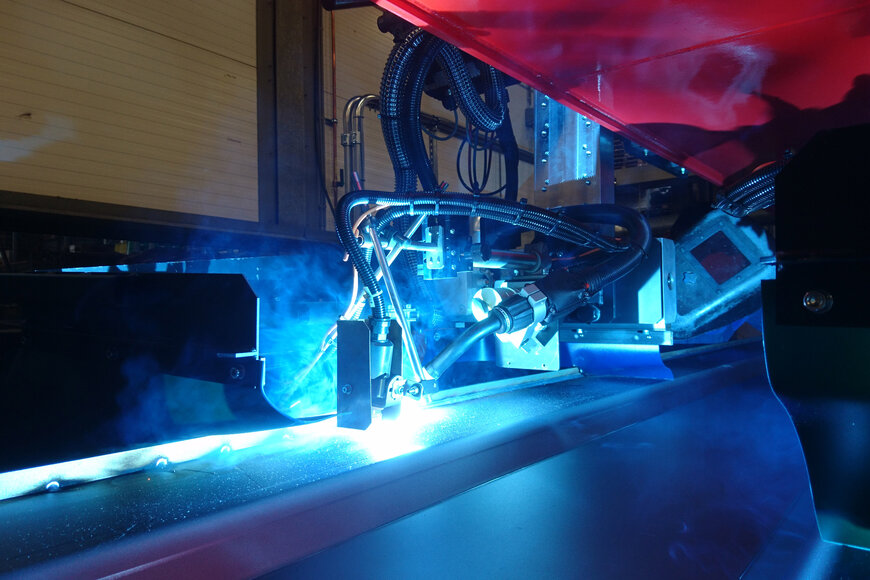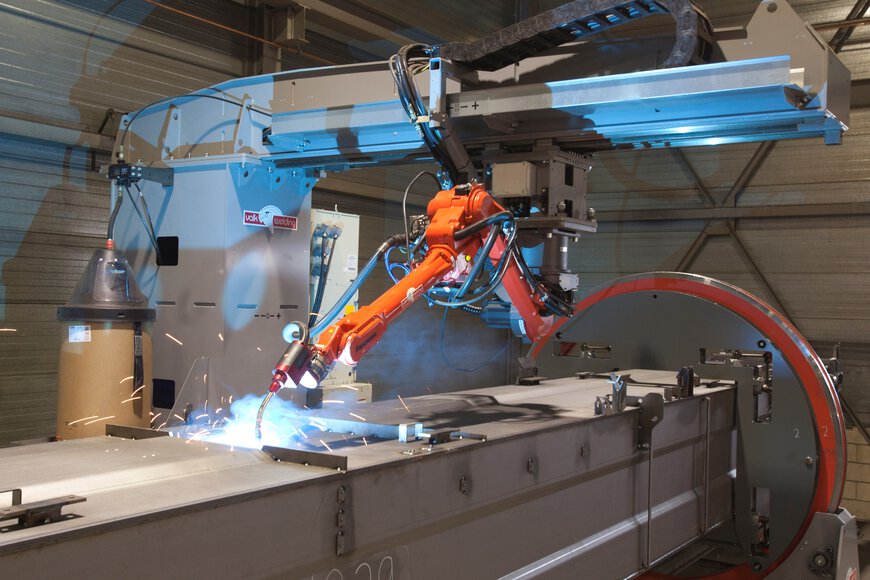Spierings tarjoaa markkinoiden suurimman mobiilitorninosturin, jonka yksi henkilö voi koota ja käyttää. Rakennusalan voimakkaan elpymisen ja markkinoiden laajentumisen Alankomaiden ulkopuolelle vuoksi näiden torninostureiden kysyntä on kasvanut nopeasti viime vuosina. Lisäksi ensimmäisen hybriditorninosturin käyttöönottoa suunnitellaan, ja valmistajalla on kunnianhimoa kasvaa edelleen maailmanlaajuiseksi brändiksi. Mahdollisimman paljon kaikki komponentit, mukaan lukien alusta, mastot ja puomit, valmistetaan talon sisällä. Mastojen ja puomien kokoonpano ja hitsaus vievät eniten tilaa, ja läpimenon lisääminen oli saavutettava samassa tilassa.
Hitsausautomaation tietämyksen nopeuttaminen
Gijs Delissen: 'Yhdessä Valk Weldingin kanssa tarkastelimme hitsausprosessia, jossa voisimme vähentää käsittely- ja hitsausaikaa. Mastojen tuotantolinjaa varten kehitettiin konsepti, joka koostui lineaarisesta järjestelmästä pitkittäissaumojen hitsauksen automatisointiin ja hitsausrobottiasennuksesta ala-, pääty- ja pääosien hitsaamiseen. Molempien monimutkaisten asennusten toimitusaika oli yksi vuosi. Käytimme tuon ajan perehtyäksemme perusteellisesti hitsausrobotisointiin. Tätä varten hankimme hitsausrobotin vähemmän monimutkaisia osia varten. Näin ollen pystyimme ottamaan varhaisessa vaiheessa käyttöön toimenpiteitä ylävirran prosessissa toleranssien hallitsemiseksi, jotta ne vastaisivat hitsausrobotin vaatimuksia.'







